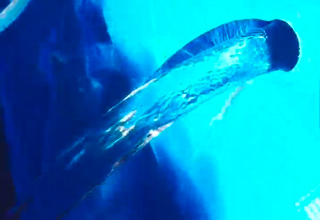
The devastating fires in the Amazon Rainforest have been going on for three weeks now and media was slow to give any sort of attention to it. Twitter and the rest of the Internet have been flooded with posts and messages about the fires in hopes of spreading awareness to anyone who could help out. However, some of the photos and information posted are not entirely true.
For instance, the below tweet has been shared over half-a-million times. Both of the photos in it are years-old.
The Amazon has been burning for 3 weeks, and I’m just now finding out because of the lack of media coverage. THIS IS ONE OF THE MOST IMPORTANT ECOSYSTEMS ON EARTH. SPREAD AWARENESS #PrayforAmazonia pic.twitter.com/HHVnaM66VV
— (@tyswizzlee) August 20, 2019
According to Snopes, the photo on the left was actually taken way back in 1989. It can be seen in a 2007 Guardian article on the deforestation of the South American forest.
Also, as reported by Newshub, the photo on the right was used in the popular scientific journal, Nature, back in 2012.
Next, check out these tweets by Global environmental scientist, Dr. Jonathan Foley.
A lot of people are talking about the fires and deforestation happening in the Brazilian Amazon right now.
— Dr. Jonathan Foley (@GlobalEcoGuy) August 21, 2019
For good reason! Rates of burning and clearing appear to be (with tentative data) much higher than recent years.
But it's good to know a few things first.
— Dr. Jonathan Foley (@GlobalEcoGuy) August 21, 2019
First, there is usually burning in the Brazilian Amazon this time of year, as it's the dry season there (in the southern Amazon) and this is when & how people clear land.
Fires aren't unusual. What's unusual is that they are increasing.
Second, until recently, we had been seeing a huge *decrease* in the rates of deforestation -- almost a 80% decline.
— Dr. Jonathan Foley (@GlobalEcoGuy) August 21, 2019
This was one of the biggest environmental wins on the planet, and it's worrisome to see this good trend appear (?) to be reversing now.
Graph from @mongabay pic.twitter.com/UT2T6qk9aR
If deforestation really increases again, and stays there, this is very worrisome.
— Dr. Jonathan Foley (@GlobalEcoGuy) August 21, 2019
It would have tremendous impacts on the planet for several reasons:
- an immediate release of CO2, adding to climate change
- an immediate loss of habitat, biodiversity
...
- an immediate impact on regional climate, from changes in the heating and feeding of moisture to the regional atmosphere
— Dr. Jonathan Foley (@GlobalEcoGuy) August 21, 2019
- a long-term potential decline in natural carbon sinks there
and ...
- the possibility that the Amazon can hit a potential "tipping point", where it would dry out and turn into a giant savanna
— Dr. Jonathan Foley (@GlobalEcoGuy) August 21, 2019
This "tipping point" is not well understood, and we don't know if and when it might occur. But it is theoretically possible, according to some models.
In all, changes in deforestation in the Amazon are *hugely* important to the planet.
— Dr. Jonathan Foley (@GlobalEcoGuy) August 21, 2019
There was good news (lower rates of deforestation) and this appears to be sliding backward. This is one of the most important things to shape the future of Earth's climate and biodiversity.
I would put this near or at the top of the list of "things that we should be focusing on RIGHT NOW" for climate change and the global environment.
— Dr. Jonathan Foley (@GlobalEcoGuy) August 21, 2019
There's a lot to read there, but one important point to take away from it is from his third tweet. While fires in the Amazon basin are up 80% from last year, they are actually below average in comparison to the past 15 years.
In a report from NASA, "As of August 16, 2019, an analysis of NASA satellite data indicated that total fire activity across the Amazon basin this year has been close to the average in comparison to the past 15 years. Though activity appears to be above average in the states of Amazonas and Rondônia, it has so far appeared below average in Mato Grosso and Pará, according to estimates from the Global Fire Emissions Database, a research project that compiles and analyzes NASA data."
"As of August 16, 2019, an analysis of NASA satellite data indicated that total fire activity across the Amazon basin this year has been close to the average in comparison to the past 15 years."
TL;DR Photos used to depict the Amazon Rainforest fires have been shown to be old, in one case up to 30 years old, and fires in the Amazon basin are actually below average in comparison to the last 15 years.






15 Comments